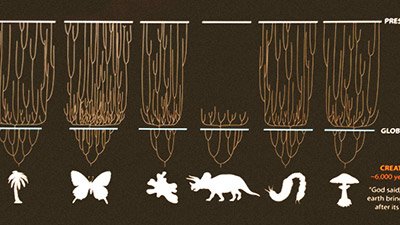Flies with Lice
Nomadic lice hitching a ride on flies direct the course of evolution. Hmmm.
News Source
Pigeons and doves are plagued by lice. Wing lice tend to infest multiple species, but body lice are species-specific unless artificially transferred. Evolutionary biologists at the University of Utah believe that “the evolutionary history of body lice . . . parallels that of the host [bird] more closely than does the evolutionary history of wing lice.”1 Therefore, they designed an experiment to see how this evolution happens. (Well, sort of.)
What they really designed was a way to show how the speciation of organisms (birds and lice) could be interdependent, influenced in this case by yet another organism (a fly). They then assumed they had discovered something about the way new kinds of animals evolved in the unobservable past.
Bird lice sometimes hitch a ride on the parasitic blood-sucking hippoboscid fly. But only the long-legged wing lice seem to be able to attach themselves to the flies. Short-legged body lice can’t get a grip. Constructing an experiment wherein infested pigeons were kept from physical contact with nearby uninfested doves, the researchers spent three years counting the lice on birds housed with hippoboscid flies and those not. As reported in the Proceedings of the National Academy of Sciences, the wing lice traveled between birds exposed to flies, but the body lice did not.
The Utah researchers are being praised for “using present-day species interactions to convincingly explain evolutionary patterns that emerged millions of years in the past.” They are being hailed for doing “what evolutionary ecologists try to do but rarely accomplish,” namely, “the difficult task of linking current processes to evolutionary change.”
The PNAS abstract blurs the definitions of several key words when it reports:
Reciprocal selective effects between coevolving species are often influenced by interactions with the broader ecological community. Community-level interactions may also influence macroevolutionary patterns of coevolution, such as cospeciation. (emphasis ours)
And the PNAS paper concludes by stating that these nomadic lice provide “just one example of how broad community interactions can influence coevolutionary dynamics over both micro- and macroevolutionary time.”
The authors are incorrectly stating that cospeciation is one of the macroevolutionary patterns of coevolution. But speciation is not a kind of macroevolution; it is a type of microevolution.* Evolutionists like these two terms (micro- and macroevolution) because they imply that small changes that can produce new species eventually add up to big changes producing new kinds of organisms. Speciation (microevolution) does not involve the acquisition of new genetic information but only a reshuffling of the old. Macroevolution would require new genetic information. But birds have remained birds, and lice have remained lice. Thus macroevolution wasn’t demonstrated.
The flies allow the wing lice to fly the coop whereas the body lice have to stick around and be exposed to whatever conditions influence the natural selection and speciation of their host birds.
And despite all the praise for their “convincing” explanation of past evolutionary processes, they have not provided any mechanism by which new genetic information could be acquired. Instead they have nicely elucidated a mechanism by which cospeciation of two animals could be prevented by an ecological third party: the flies allow the wing lice to fly the coop whereas the body lice have to stick around and be exposed to whatever conditions influence the natural selection and speciation of their host birds.
*As we comment on the terms microevolution and macroevolution as they are used in the PNAS paper, our preference is that the words not be used at all. We contend it is not the degree of change that is different between the two, but that the type (and direction of change) is different. These two words do not make the differences clear.
Further Reading
For More Information: Get Answers
Remember, if you see a news story that might merit some attention, let us know about it! (Note: if the story originates from the Associated Press, FOX News, MSNBC, the New York Times, or another major national media outlet, we will most likely have already heard about it.) And thanks to all of our readers who have submitted great news tips to us. If you didn’t catch all the latest News to Know, why not take a look to see what you’ve missed?
(Please note that links will take you directly to the source. Answers in Genesis is not responsible for content on the websites to which we refer. For more information, please see our Privacy Policy.)
Footnotes
- Christopher W. Harbison et al., “Community Interactions Govern Host-switching with Implications for Host–parasite Coevolutionary History,” PNAS 108, no. 23 (June 7, 2011): 9525–9529, doi:10.1073/pnas.1102129108.

Answers in Genesis is an apologetics ministry, dedicated to helping Christians defend their faith and proclaim the good news of Jesus Christ.
- Customer Service 800.778.3390
- Available Monday–Friday | 9 AM–5 PM ET
- © 2025 Answers in Genesis


